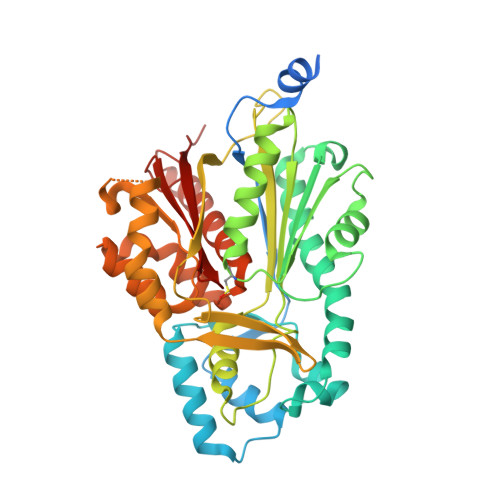Bibenzyl synthesis in Cannabis sativa L.
Boddington, K.F., Soubeyrand, E., Van Gelder, K., Casaretto, J.A., Perrin, C., Forrester, T.J.B., Parry, C., Al-Abdul-Wahid, M.S., Jentsch, N.G., Magolan, J., Bozzo, G.G., Kimber, M.S., Rothstein, S.J., Akhtar, T.A.(2022) Plant J 109: 693-707
- PubMed: 34786774
- DOI: https://doi.org/10.1111/tpj.15588
- Primary Citation of Related Structures:
7SGY - PubMed Abstract:
This study focuses on the biosynthesis of a suite of specialized metabolites from Cannabis that are known as the 'bibenzyls'. In planta, bibenzyls accumulate in response to fungal infection and various other biotic stressors; however, it is their widely recognized anti-inflammatory properties in various animal cell models that have garnered recent therapeutic interest. We propose that these compounds are synthesized via a branch point from the core phenylpropanoid pathway in Cannabis, in a three-step sequence. First, various hydroxycinnamic acids are esterified to acyl-coenzyme A (CoA) by a member of the 4-coumarate-CoA ligase family (Cs4CL4). Next, these CoA esters are reduced by two double-bond reductases (CsDBR2 and CsDBR3) that form their corresponding dihydro-CoA derivatives from preferred substrates. Finally, the bibenzyl backbone is completed by a polyketide synthase that specifically condenses malonyl-CoA with these dihydro-hydroxycinnamoyl-CoA derivatives to form two bibenzyl scaffolds: dihydropiceatannol and dihydroresveratrol. Structural determination of this 'bibenzyl synthase' enzyme (CsBBS2) indicates that a narrowing of the hydrophobic pocket surrounding the active site evolved to sterically favor the non-canonical and more flexible dihydro-hydroxycinnamoyl-CoA substrates in comparison with their oxidized relatives. Accordingly, three point mutations that were introduced into CsBBS2 proved sufficient to restore some enzymatic activity with an oxidized substrate, in vitro. Together, the identification of this set of Cannabis enzymes provides a valuable contribution to the growing 'parts prospecting' inventory that supports the rational metabolic engineering of natural product therapeutics.
- Department of Molecular and Cellular Biology, University of Guelph, Guelph, Ontario, N1G 2W1, Canada.
Organizational Affiliation:


















